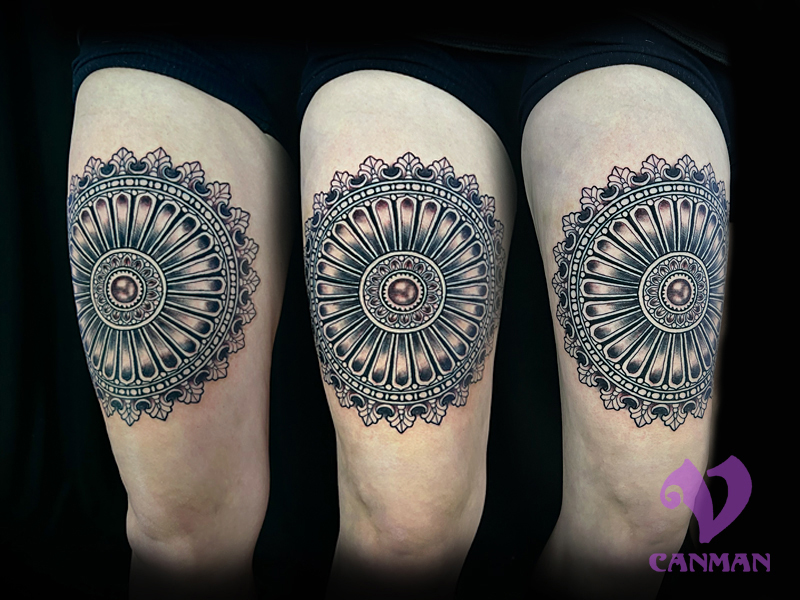This Sacred geometry tattoo has a victorian mandala feel to it.
The Clients inspiration comes from a design on the ceiling of the Cambridge multicultural arts center.
It has personal meaning as this is where she got married.
Looking for a cool styled sacred geometry tattoo?
Go to our Tattoo Request Form to get your new tattoo project started!!
About sacred geometry
Sacred geometry is a term used to describe geometric and mathematical principles.
They are believed to underlie the creation and structure of the universe.
It’s a concept that has been explored and revered by various ancient cultures, including the Egyptians, Greeks, and Hindus.
The study of sacred geometry involves examining geometric forms and patterns.
Also, these patterns are fundamental to the natural world and the cosmos.
Geometric shapes often include the circle, square, triangle, pentagon, hexagon, and other polygons.
As a result, these forms are considered to have symbolic and spiritual significance.
Certain ratios, such as the golden ratio (φ – approximately 1.618), and the Fibonacci sequence, are thought to be foundational in creating harmony and beauty in art, architecture, and nature.
Sacred geometry is often associated with symbolism and spiritual meanings.
For instance, the Flower of Life, Metatron’s Cube, and the Vesica Piscis are geometric symbols believed to hold significant spiritual and cosmological importance.
These principles have been applied in various fields, including architecture, art, design, and religious symbolism.
Many ancient structures and artworks, like the pyramids of Egypt, Gothic cathedrals, and mandalas, incorporate principles of sacred geometry.
Therefore, the belief in the sacredness of geometric patterns is linked to the underlying order and structure of the universe.
Some also believe that contemplating or meditating on these geometric forms can have spiritual, healing, or consciousness-expanding effects.
The the idea of sacred geometry has a long history and has fascinated many scholars and artists.
In addition, it’s also a subject of debate and skepticism.
In conclusion, some view it as an abstract, speculative concept lacking empirical evidence.
Others see it as a fascinating tool for understanding and appreciating the patterns and interconnectedness found in nature and the cosmos.
